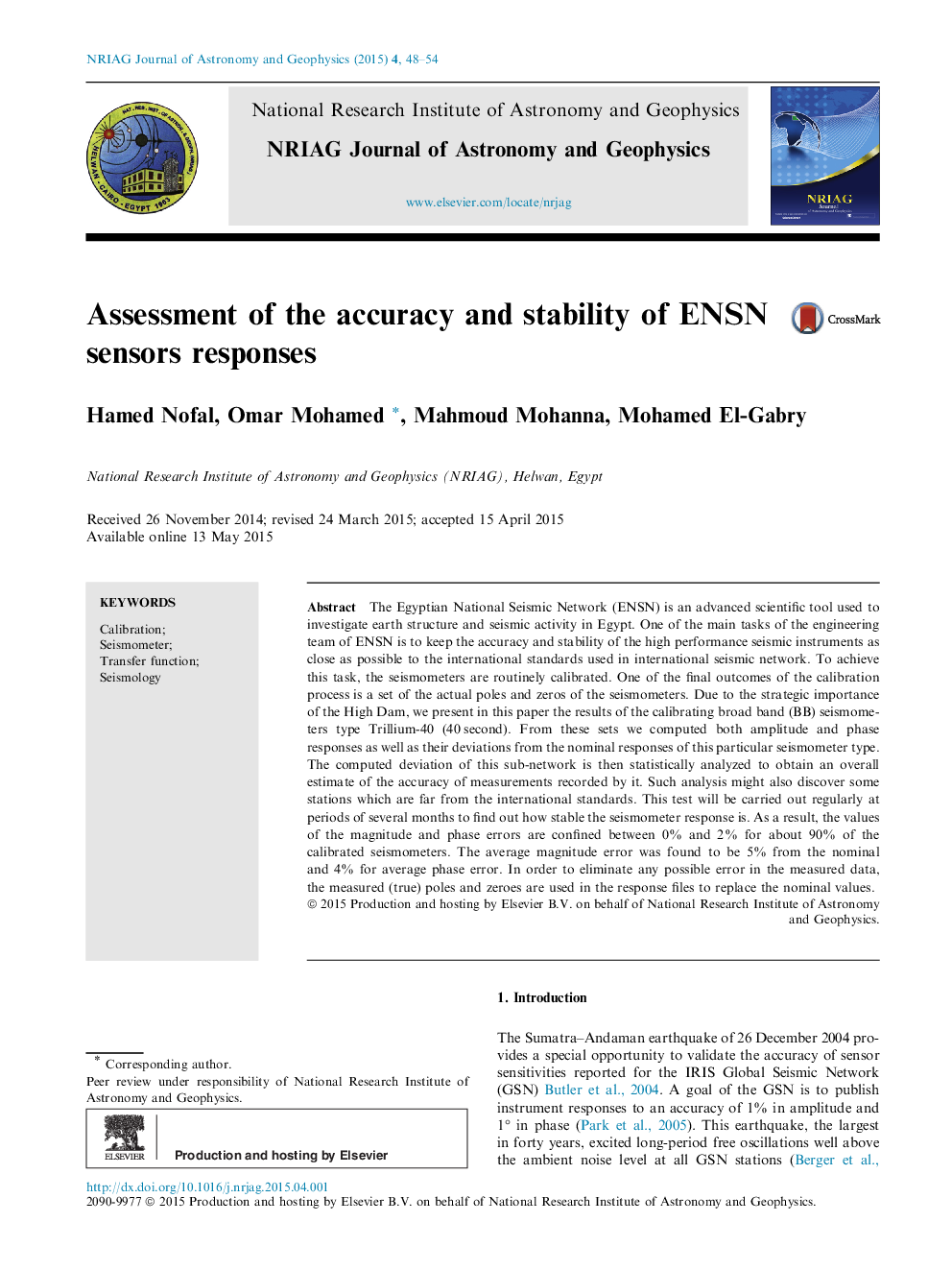| Article ID | Journal | Published Year | Pages | File Type |
|---|---|---|---|---|
| 1780596 | NRIAG Journal of Astronomy and Geophysics | 2015 | 7 Pages |
The Egyptian National Seismic Network (ENSN) is an advanced scientific tool used to investigate earth structure and seismic activity in Egypt. One of the main tasks of the engineering team of ENSN is to keep the accuracy and stability of the high performance seismic instruments as close as possible to the international standards used in international seismic network. To achieve this task, the seismometers are routinely calibrated. One of the final outcomes of the calibration process is a set of the actual poles and zeros of the seismometers. Due to the strategic importance of the High Dam, we present in this paper the results of the calibrating broad band (BB) seismometers type Trillium-40 (40 second). From these sets we computed both amplitude and phase responses as well as their deviations from the nominal responses of this particular seismometer type. The computed deviation of this sub-network is then statistically analyzed to obtain an overall estimate of the accuracy of measurements recorded by it. Such analysis might also discover some stations which are far from the international standards. This test will be carried out regularly at periods of several months to find out how stable the seismometer response is. As a result, the values of the magnitude and phase errors are confined between 0% and 2% for about 90% of the calibrated seismometers. The average magnitude error was found to be 5% from the nominal and 4% for average phase error. In order to eliminate any possible error in the measured data, the measured (true) poles and zeroes are used in the response files to replace the nominal values.
